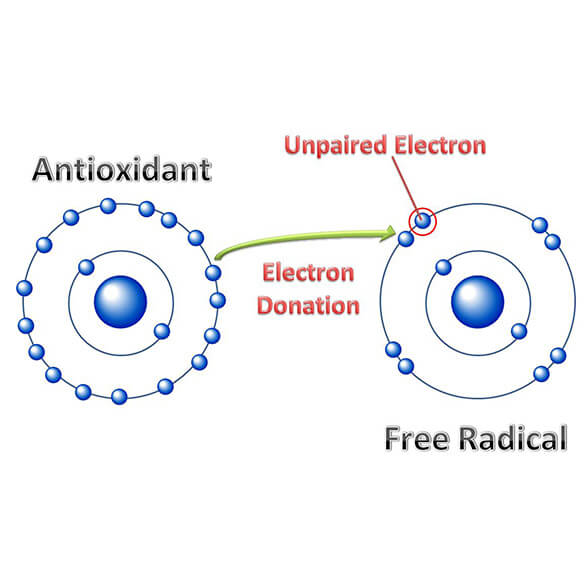Understanding How Antioxidants Combat Free Radicals

Oxidation is a chemical reaction where electrons or hydrogen from a molecule are transferred to an oxidant (the fancy name for a substance that gains electrons). This reaction produces what we call free radicals and these free radicals can, in turn, lead to the creation of other free radicals. For those that remember their chemistry classes, free radicals are atoms or molecules with unpaired electrons, which are highly reactive. If this occurs inside a living cell it can cause damage to the cell which is suspected to lead to things like cancer and heart disease.
Free radicals can be produced when food is broken down or by external factors such as radiation and tobacco. However, they are also produced through regular cell metabolism — which obviously can't be prevented. In fact, oxygen is the most common form of free radicals. When oxygen (O2) becomes electrically charged it tries to steal electrons from other molecules, which causes these other molecules to then become free radicals.
To the rescue are antioxidants (there's a good introduction to these here) that are substances that help protect cells against the harmful effects of free radicals. They accomplish this by neutralizing or stabilizing the free radicals which prevents them from causing harm.
The Paradox of Exercise
During exercise more oxygen is used by the body so there is more oxidation taking place and therefore more free radicals are produced. Normally you'd expect that this would cause damage to cells. However, some research has shown that exercise actually helps the body defend itself against free radicals and oxidation. The mechanism of how this occurs is not yet known, but it does demonstrate that we have built in protective mechanisms. One important note is that this seems to only occur in regularly active individuals and does not occur in a person who, for example, that just shovels the snow 4 times a year.
Good Sources of Antioxidants
- Vitamin A and Carotenoids from tomatoes, broccoli, peaches, apricots, sweet potatoes, carrots, milk, egg yolks, mozzarella cheese, and liver.
- Vitamin C (ascorbic acid) from citrus fruits, strawberries, kiwis, green peppers, green leafy vegetables, poultry, fish, and beef.
- Vitamin E from almonds, broccoli, vegetable oil, liver oil.
- Beta-carotene from sweet potatoes, carrots, cantaloupe, squash, apricots, pumpkin, and mangoes. As well as leafy vegetables such as spinach and kale.
- Lutein from green, leafy vegetables such as; collard greens, spinach, and kale.
- Lycopene from tomatoes, watermelon, guava, papaya, apricots, pink grapefruit, blood oranges, and other foods.
- Selenium, although not an antioxidant, is a mineral that is an antioxidant nutrient and is found in foods like fish, eggs, chicken, red meat, rice, wheat, and brazil nuts.
Clearly, the best way to obtain adequate amounts of antioxidants is to ensure that your diet mainly consist of plenty of natural foods instead of processed and packaged products.



Leave a Reply